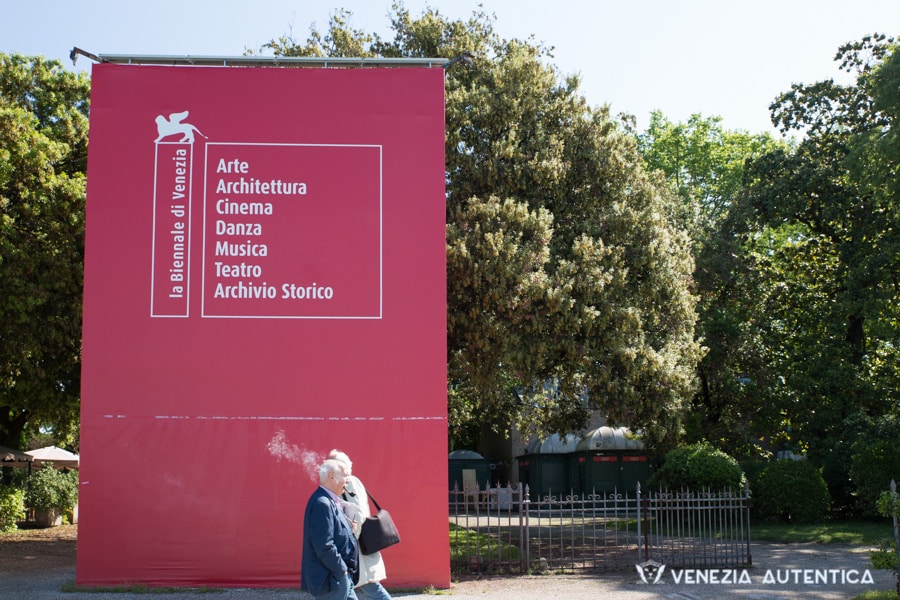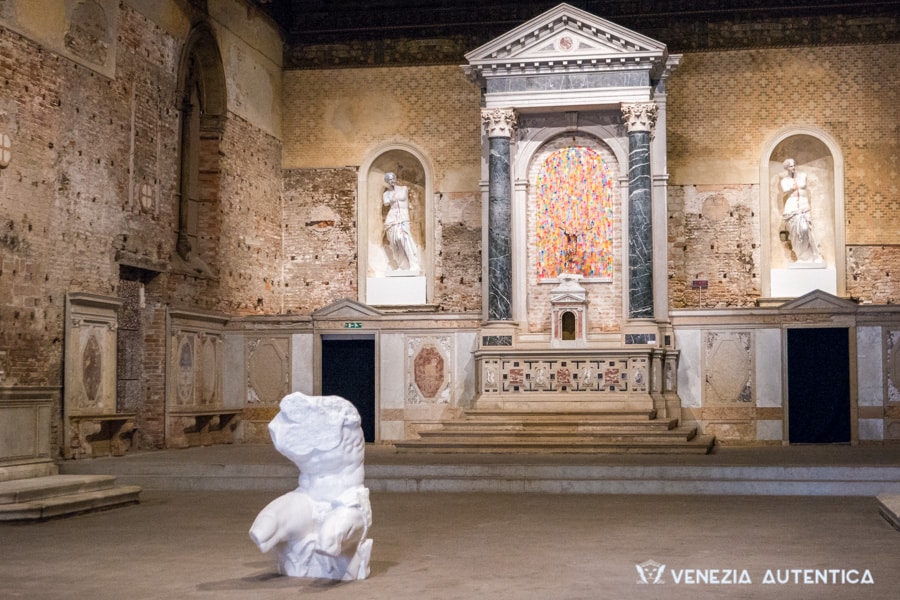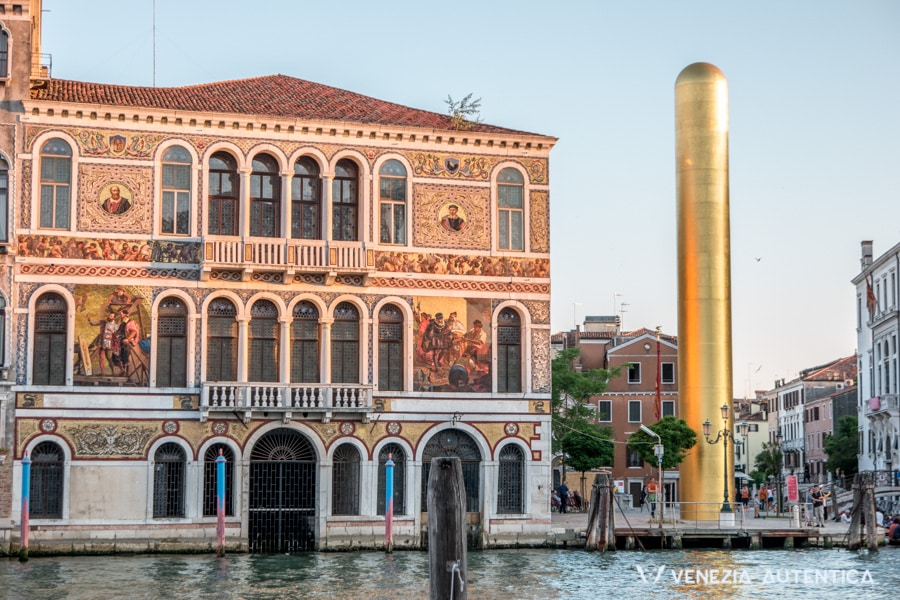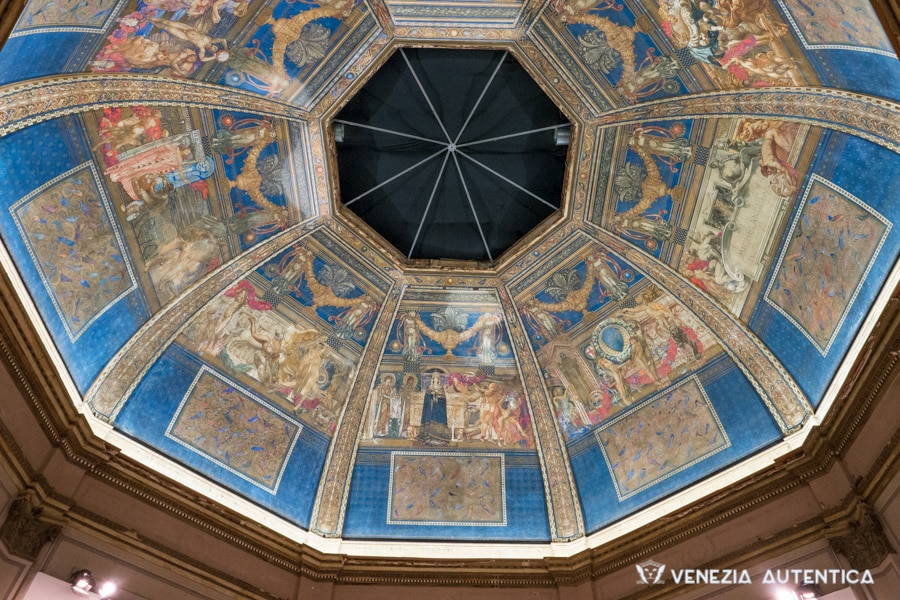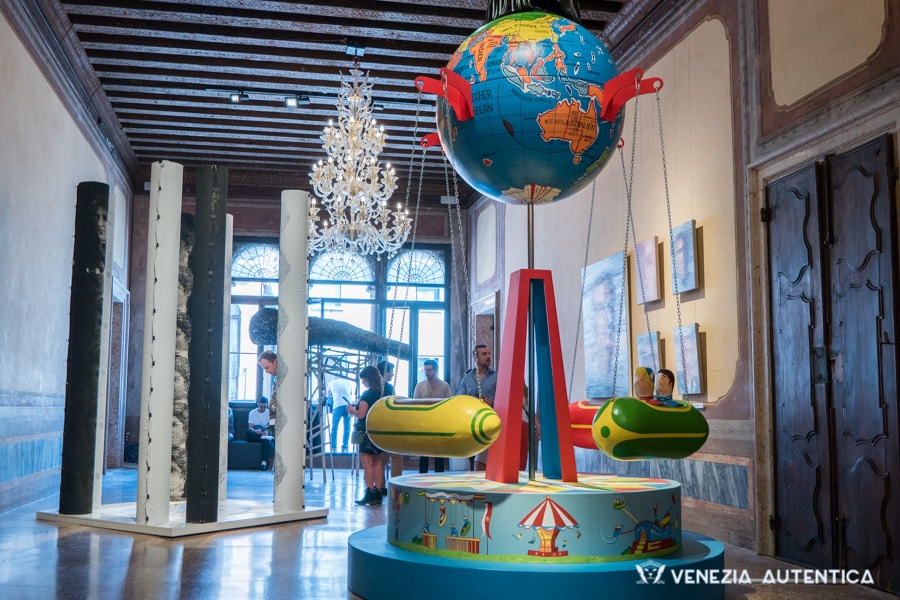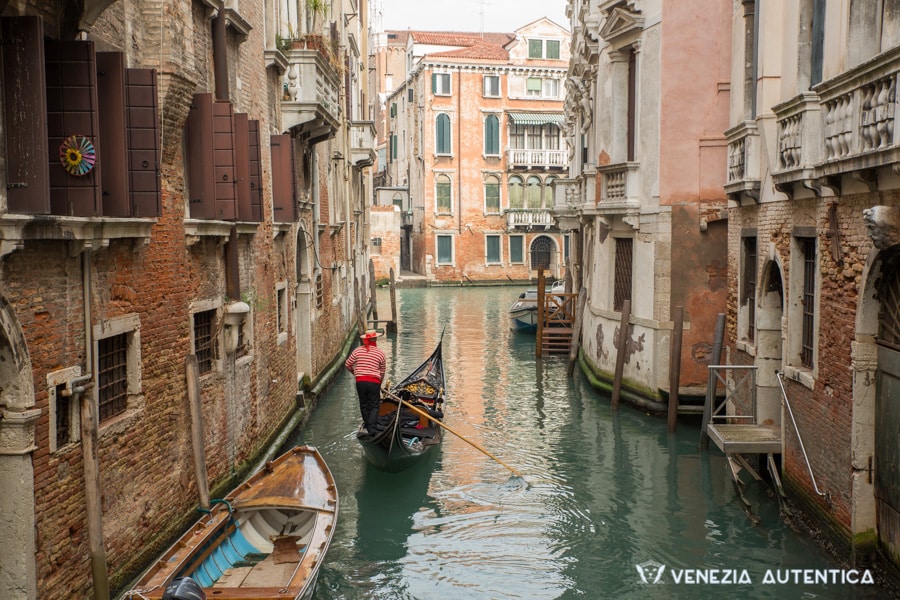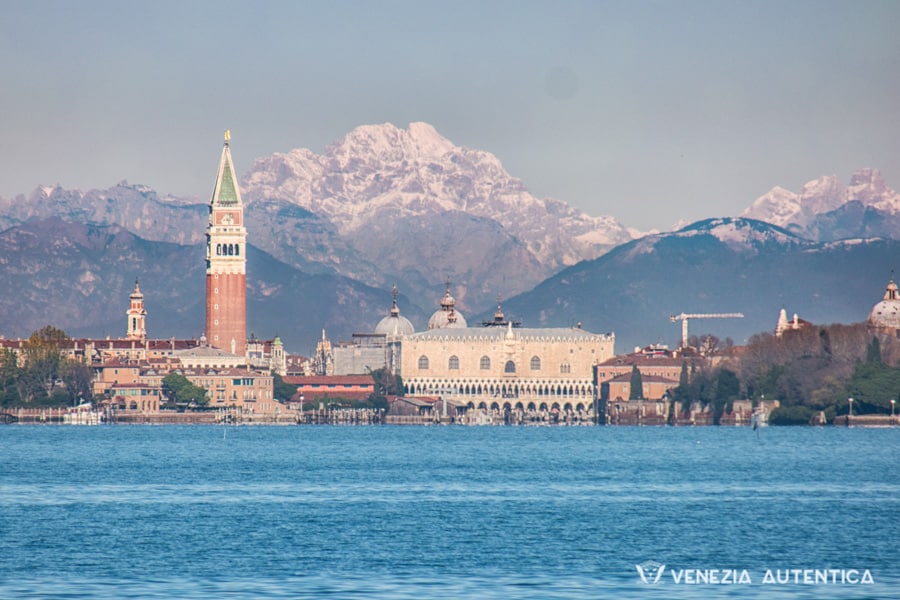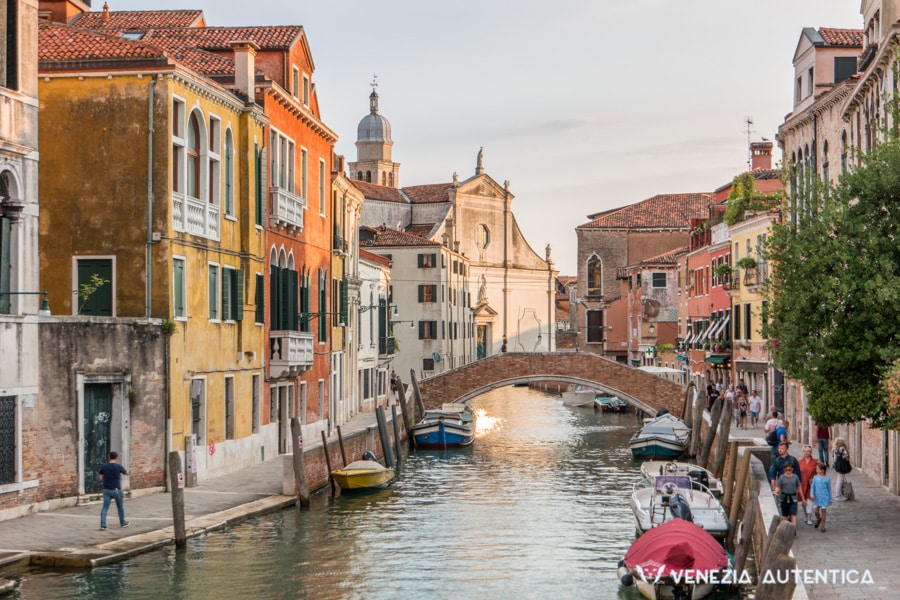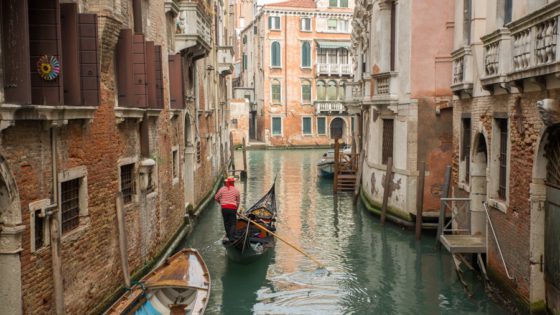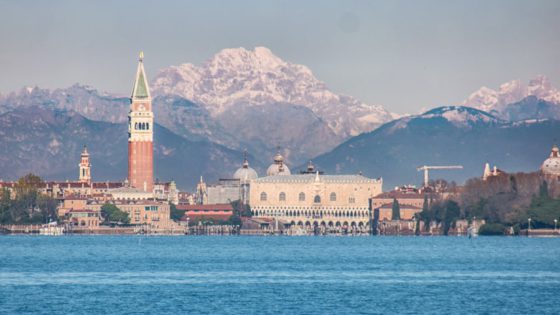The Venice Biennale
Are you looking for a quick introduction to the worldwide famous Venice Biennale, or Biennale di Venezia, and some information to best enjoy it?
You’re in the right place!
What is the Venice Biennale?
The expression “Venice Biennale” is used mainly to describe a large-scale international contemporary art exhibition in Venice.
Until recently, the name “Venice Biennale” was used to refer both to an organization based in Venice and to its international biennial exhibition of contemporary visual arts.
To avoid confusion, in 2009 the organization changed its name to “Biennale Foundation” and the exhibition’s name to “Art Biennale”, Biennale d’Arte in Italian.
Today, the Biennale Foundation organizes:
- The Art Biennale
- The Architecture Biennale
- The Cinema Biennale
- The Dance Biennale
- The Music Biennale
- The Theatre Biennale.
The three most famous exhibitions of the Venice Biennale are the Art Biennale, the Architecture Biennale (since 1980), and the Biennale Cinema (since 1932).
Of course, the Biennale Foundation has also a beautiful website with everything related to the Foundation’s initiatives
Why is the Venice Biennale so famous?
The Venice Biennale is famous worldwide because it was the first Biennale.
All other biennial exhibitions in the world have been modelled on the Venice Biennale.
Still today, the Venice Biennale is widely considered the most prestigious Biennale exhibition in the world.
How many people visit Venice Biennale every year?
Lately, each year, over 500,000 visitors have come to visit the Venice Biennale.
Want more tips, tools and stories from Venice, Italy?
We're on a mission to make it easy and fun to discover and support the authentic Venice. Try our email and see for yourself!
Useful Information for the Venice Biennale (dates, duration, costs, etc...)
Are you looking for a quick introduction to the worldwide famous Venice Biennale, or Biennale di Venezia, and some information to best enjoy it?
You’re in the right place!
On which year is the Venice Biennale?
Despite the name Biennale, which in Italian means biennial, only the Art Biennale and the Architecture Biennale are held every two years. The Venice Film Festival, the Theatre Biennale, the Music Biennale, and the Dance Biennale are held every year.
Until 2019:
- The Art Biennale in Venice used to take place in odd years (…, 2015, 2017, 2019, …)
- The Architecture Biennale in Venice used to be held in even years (…, 2014, 2016, 2018, …)
After the Covid-19 pandemic struck and forced exhibitions to halted temporarily:
- The Art Biennale in Venice will take place in even years (2022, 2024, …)
- The Architecture Biennale will be held in uneven years (2021, 2023, …)

Unlock a discount at the best local businesses in Venice
Learn more about Venezia Autentica Friends' PassHow long does the Venice Biennale last?
The Art Biennale and the Architecture Biennale in Venice are the two exhibitions which last the longest: over 6 months!
The Venice Film Festival, the Theatre Biennale, the Music Biennale, and the Dance Biennale last from 10 days to 2 weeks.
When is the Venice Biennale?
The dates of the Art and the Architecture Biennale in Venice can change every year. In general, the Art or Architecture Biennale start in May and end at the end of November.
Similarly to these leading evens, the dates of the other Biennale in Venice can vary from year to year.
The Dance Biennale usually starts in the last week of June and ends the first days of July. It is then ‘followed’ by the Theatre Biennale which tends to begin the last week of July and ends the second week of August.
The world famous Venice Film Festival, on its hand, typically starts in the last days of August and ends the second week of September.
The last of these “yearly Biennale” is the Music Biennale which starts the last days of September and ends the second week of October.
When is the best moment to come see the Venice Biennale?
Since the Architecture and Art Biennale in Venice last over 6 months, it is possible to carefully plan when to come to Venice and check out the exhibition.
If you’re flexible and can decide when to travel, we would recommend coming either before mid-June or after mid-September. In fact, between June and August the temperatures in Venice tend to be high, the days very humid, and the city to be very crowded.
On the contrary, before mid-June, and after mid-September Venice is not as crowded and the days are not as hot and humid, making it possible to enjoy both the Venice Biennale and Venice much more!
What are the opening days and hours of the Venice Biennale?
Opening Days:
The Venice Biennale is CLOSED on Mondays.
In 2022, however, it will be OPEN also on 9 Mondays:
- 25th of April
- 30th of May
- 27th of June
- 25th of July
- 15th of August
- 5th of September
- 19th of September
- 31st of October
- 21st of November
Opening Hours:
The Giardini area and the Arsenale area are both open from 10 AM to 6 PM
How much does a ticket for the Venice Biennale cost?
The cost for a one-entry ticket for the Art or the Architecture Biennale in Venice is 25,50 euros [2022].
One such ticket gives access both to the Giardini area and the Arsenale area. This ticket allows you to access each location only once. The sites, however, can be visited on different and non-consecutive days.
Exhibitions in Palazzos across the city and on the islands of the Lagoon have free entry.
Week cards, permanent passes, and “Biennale Cards” are also available, and can be purchased at the Venice Biennale entrance.
Where can I buy tickets for the Venice Biennale?
It is possible to buy tickets for the Venice Biennale both at the entrance and online.
You can buy your ticket from the official website of the Venice Biennale.
Besides the discount for early bird purchases, buying your ticket online allows you to avoid long queues at the ticket booths.
One-week cards and permanent passes are also available, but can only be bought at the Biennale entrance, as they require a copy of your personal ID.
Are there any discounted tickets for the Venice Biennale?
Discounted tickets for the Venice Biennale are available for Students.
A small discount is also available for early-bird online purchases.
Does the Venice Biennale have a theme?
Yes, since 1973 the Art Biennale of Venice has a theme. The Architecture Biennale of Venice also has a theme since its creation in 1980.
What is the theme of the current or coming Venice Biennale?
The theme of the Venice Art Biennale 2022 is “THE MILK OF DREAMS” and is curated by Cecilia Alemani.
Regarding the exhibition, Cecilia Alemani stated “As the first Italian woman to hold this position, I intend to give voice to artists to create unique projects that reflect their visions and our society”
The 59th International Art Exhibition of La Biennale di Venezia, titled The Milk of Dreams, will open to the public from Saturday April 23 to Sunday November 27, 2022, at the Giardini and the Arsenale; it will be curated by Cecilia Alemani and organised by La Biennale di Venezia chaired by Roberto Cicutto. The Pre-opening will take place on April 20, 21 and 22; the Awards Ceremony and Inauguration will be held on 23 April 2022.
You can watch the Venice Biennale Arte 2022 presentation here
Where in Venice is the Venice Biennale?
The main exhibition areas of the Venice Biennale are at the “Giardini” and at the “Arsenale,” two spaces slightly off the most beaten path, except for exhibition-goers, obviously. There are also many works hosted in Palazzos spread around the city and on some islands of the Venetian Lagoon.
The Giardini of the Venice Biennale:
The Giardini, a park on the eastern edge of Venice, is the traditional site of the Venice Biennale since its first edition in 1895.
The Venice Biennale was initially held at the “Palazzo dell’Esposizione” which is where the Central Pavilion is located today. The growing success of the Venice Biennale led to the construction of permanent National Pavilions in this area, the first of which was built by Belgium in 1907.
Today, the Central Pavilion has become a multifunctional structure of 3,500 square meters, and the area around it counts 29 National Pavilions. The pavilions are the property of the individual countries and are managed by their Ministries of Culture.
These are the Nations which have a National Pavilion at the Giardini of the Venice Biennale:
Belgium, Hungary, Germany, Great Britain, France, Netherlands, Russia, Spain, Czech Republic and Slovak Republic, United States of America, Denmark, Venice , Austria, Greece, Israel, Switzerland, Venezuela, Japan, Finland, Canada, Uruguay, Nordic Countries: Sweden, Norway, Finland, Brazil, Australia, Korea.
The Arsenale
The Arsenale, which once was the largest production center in the pre-industrial era employing up to 2,000 workers a day, is located on the North-East of Venice.
In 1980, the Arsenale opened the ‘Corderie dell’Arsenale’ and the ‘Magazzini del Sale’ which became the exhibition sites of the 1st International Architecture Exhibition of the Venice Biennale.
Since then, the Arsenale is also used for the Art Biennale.
Today, the Arsenale hosts the Venice Biennale Pavilions of 23 Nations: Albania, Argentina, Chile, People’s Republic of China, Croatia, United Arab Emirates, Philippines, Georgia, Indonesia, Ireland, Italy, Republic of Kosovo, Latvia, Former Yugoslav Republic of Macedonia, Malta, Mexico, New Zealand, Peru, Singapore, Republic of Slovenia, Republic of South Africa, Tunisia e Turkey.
Where are the pavilions of those Nations that aren't at Giardini nor at Arsenale?
The countries not owning a pavilion in the Giardini nor at the Arsenale are exhibited in Palazzos across Venice as well as on islands of the Venetian Lagoon.
Since the locations can change every year, it is important to look on the Biennale website for information on the whereabouts of non-permanent pavilions!

Book an authentic experience in Venice
See all experiencesThe history of the Venice Biennale:
The idea that gave birth to the Venice Biennale dates back to 1893 when the Venice City Council decided to create a biennial exhibition of Italian Art to celebrate the silver anniversary of the Italian King Umberto I and Margherita of Savoy
The first Venice Biennale, known as “Esposizione Internazionale d’Arte della Città di Venezia,” was opened on April 30, 1895, by the Italian King and Queen themselves, and attended by over 220.000 visitors.
Already at the beginning of the 20th Century, the Venice Biennale became increasingly popular and international, soon leading to the creation of permanent national pavilions.
The first National Pavilion at the Venice Biennale was created for Belgium by Leon Sneyers in 1907. By 1914, six more nations had been established permanently: Hungary, Germany, and Great Britain in 1909, France in 1912, and Russia in 1914.
Except for some rare exceptions, the international exhibition has been held every 2 years since its creation. From 1916 to 1918, and later from 1943 to 1946, however, the Venice Biennale was canceled because of the two World Wars.
In 1920, the first independent Venice Biennale President was appointed. Until then, this role was played by the Mayor of Venice.
In 1930, the Venice Biennale was transformed into an autonomous board, and in 1931 its control passed from the Venice City Council to that of the national Fascist government under Mussolini.
This change brought increased funds and led to the creations of new events such as the Music Biennale in 1930, the Biennale Venice Film Festival in 1932, and the Theatre Biennale in 1934, taking on the multidisciplinary character that the Venice Biennale has to this day.
After WWII, the Venice Biennale renewed its attention to avant-garde movements, introducing to a broader public abstract expressionism and Pop Art, as well as classical Japanese Noh theatre shows and Indian cinema.
In 1972, the Venice Biennale adopted for the first time a theme for its Art exhibition. The theme was “Work or Behaviour.”
Although Architecture works and Dance shows existed before as part of the Venice Biennale, the Foundation created the Venice Biennale dedicated to Architecture in 1980 and the one devoted to Dance in 2003.
Curiosity: Venezia Autentica at the Venice Biennale!
We have had the privileged to take an active part to the Venice Biennale 2018 by speaking at “Redesigning Tourism, an event organized by the U.S. Pavilion “Dimension of Citizenship,” for the Architecture Biennale 2018.
The objective of FREESPACE, the theme of the Architecture Biennale 2018, was to represent a generosity of spirit and a sense of humanity at the core of architecture’s agenda.
The curators of the 2018 U.S. Pavilion, Niall Atkinson, Ann Lui, and Mimi Zeiger, answered the call through “Dimensions of Citizenship” a framework created “through a series of essays digging into the meaning of citizenship and broadly position citizenship as a critical global topic helping architects and designers to envision what it means to be a citizen today”.
It was offered “for future conversations about the conditions, methodologies, and interventions of inclusion and exclusion that impact all of us” because “only when spatial understandings of citizenship—legal, cultural, and ecological—are in sight might we struggle free from antiquated definitions, forms, or bureaucracies and activate potent spaces for design.”
We were pleased to participate to the conversation around the “Dimensions of Citizenship” by taking part to the “Redesigning Tourism” conference and debate and presenting the work we do with our social business, Venezia Autentica, to make tourism a motor of local development.
Done!
We believe we provided you with all the information you need to best plan your visit for the next Venice Biennale.
What is left now for you to do is to book your flight to Venice, get your Biennale ticket, and discover what’s new in the coming Venice Biennale!
Remember to set aside enough time to enjoy Venice. Below are a few tips and tools to get you started!
I'm visiting Venice. Why should I follow your recommendations?
The way you visit Venice has an impact both on the quality of your experience and on Venice itself. Chilling, exploring, shopping, eating and drinking where the locals do, can make a huge impact both on the memories you bring home and on the local economy and community.
Home >> Visiting Venice >> Tips and Inspiration >> You’re Here
Tips and Inspiration to experience Venice
More in Visiting Venice

